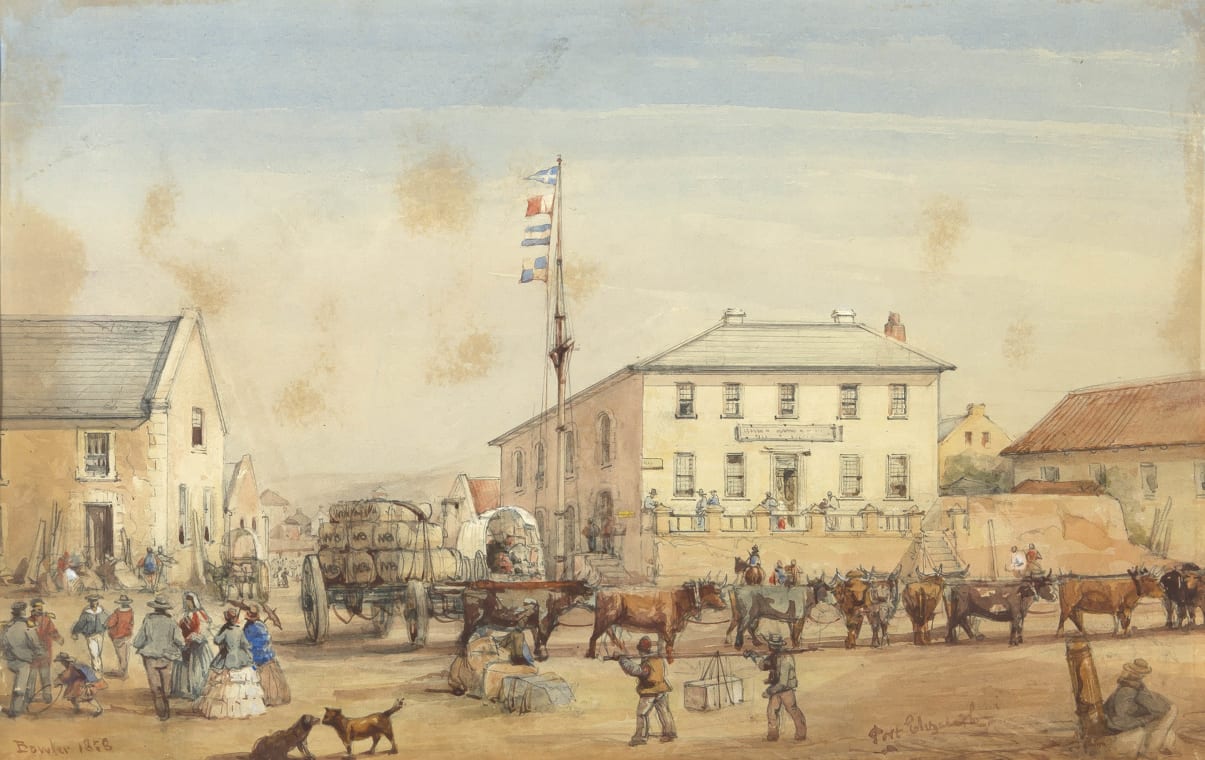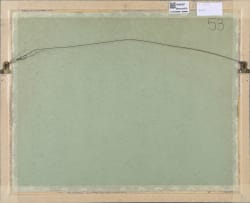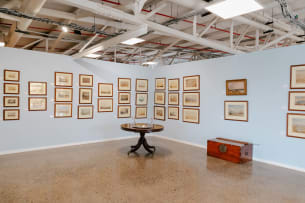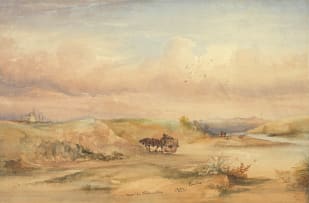October ART
Timed Online Auction, 27 September - 9 October 2024
Re/View
Incl. Buyer's Premium & VAT
About this Item
signed, dated 1858 and inscribed with the title; inscribed with 'The Port Elizabeth Office' on the mount
Notes
The Port Elizabeth office was the first establishment to open in the Eastern Cape. The flags on the flagpole above the store denote which ships were in the harbor under the agency of the Mosenthal Brothers. This scene is rounded out compositionally by Bowler's excellent population of the scene with people, oxen, and dogs.
The present lot hails from a recently deaccessioned private corporate collection - the world's second-largest collection of Bowler's work, only surpassed by the William Fehr collection at Iziko.
After arriving in Cape Town in 1834, Thomas Bowler spent his career documenting the Cape Colony. He painted both its landscapes and the lives of its inhabitants. His work also captures the early development of Port Elizabeth and scenes from his travels during a period of conflict between the Dutch and the British as they expanded into territories defended by the indigenous population.
In 1965, Bradlow suggested placing a plaque on the Wale Street building where Bowler once lived, which was then the offices of a financial services company.
"With the assistance of Dr. Mathys Bokhorst from the National Gallery and Bradlow, the company secured additional works by Bowler. Bradlow then took on the role of curator for the collection in 1967. Through his efforts, it became the country's second-largest holding of Bowler's art, surpassed only by the William Fehr collection at the Iziko Museums, encompassing paintings and other objects from the 17th to 19th centuries," says Kayleen Wrigley, Strauss & Co Valuation Specialist.
Mosenthal collection
The present lot comes from The Mosenthal Establishments Commission, a Jewish family of businessmen who played a significant role in establishing South Africa's wool industry and launching various trading stores across the country's hinterland.
In late 1856, Julius Mosenthal decided to commemorate the Mosenthal Establishments and commissioned Bowler to create seven watercolours depicting its properties and business ventures.
These watercolours showcase the early development of streets and buildings in Cape Town and Port Elizabeth (now known as Gqeberha), as well as the bustling activity in the various Mosenthal-owned trading posts in outposts such as Graaff-Reinet, Murraysburg, and Hope Town.
"Before photography became widespread, artists like Thomas Bowler and contemporaries like Thomas Baines played the role of photojournalists. Their paintings, capturing landscapes and scenes encountered during global exploration, were widely reproduced as lithographs and featured in publications," says Wrigley.
While these works arguably reflect a Western colonial perspective, they remain valuable historical records offering insights into the lifestyles and customs of European settlers of the Cape during the Victorian era.
Literature
Frank R Bradlow et al (1967) Thomas Bowler: His Life and Work, Cape Town: A A Balkema, illustrated on page 138.











